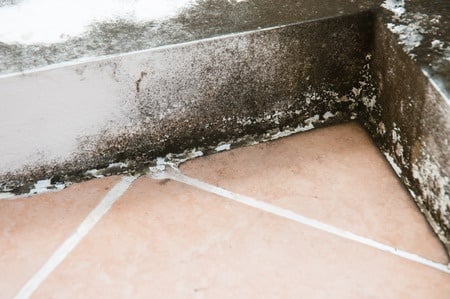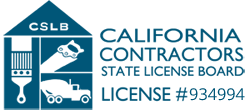
Mold might be lurking in places you wouldn’t expect, quietly impacting the air you breathe and causing damage to your home. It’s a sneaky nuisance that can grow without being noticed, often popping up in hidden corners before making its presence fully known. Understanding how to identify hidden mold in your home is essential for maintaining a healthy and safe environment, especially in Los Angeles where humidity and moisture can create the perfect mold-growing conditions.
Early detection is key to preventing the headaches and potential health problems mold can bring. Without timely intervention, what starts as a small issue can bloom into significant property damage or health issues. So, let’s explore how you can recognize the signs of hidden mold and keep your home safe and sound.
Recognizing the Signs of Hidden Mold
Detecting mold isn’t just about spotting the fuzzy, discolored spots on walls or ceilings. Often, mold makes its presence known through less obvious clues. Take a look at some common indicators of hidden mold:
– Musty Odors: A persistent, earthy smell may waft through your home, especially when the air conditioner or heater runs. If you’re catching a whiff of this unpleasant scent, it might hint at mold growing behind walls or under floors.
– Unexplained Health Symptoms: Are you or your family members experiencing more sneezing, coughing, or headaches indoors? Mold spores can trigger or worsen allergies and respiratory issues, acting like an unnoticed irritant in your daily life.
– Water Damage or Leaks: Previous water leaks or persistent dampness can create a breeding ground for mold. Mold loves moisture, so any areas of your home that have been wet for more than 24 hours should be checked.
Understanding these signs is important because mold can grow in some tricky spots. It’s not just about what you can see; often, mold grows stealthily behind paneling, under carpets, or inside walls. These hidden areas can harbor colonies that thrive on the moisture trapped inside. Knowing these signs gives you a head start in fighting back against mold, saving both your health and home from potential problems down the line.
Common Areas Where Mold Hides
Mold thrives in damp, dark places and often hides where we least expect it. Many homeowners might overlook areas where mold loves to settle. Knowing where mold commonly lurks can help you check the right spots before it becomes a bigger problem.
– Bathrooms: High levels of moisture from showers and baths make bathrooms a prime location for mold growth. Check around the bathtub, shower lines, and even under the sink.
– Kitchens: Sinks, dishwashers, and refrigerators can hide moisture that creates the perfect conditions for mold.
– Basements: Basements often have leaks or condensation that support mold growth, especially since they don’t always receive fresh air circulation.
– Attics: Poor ventilation and roof leaks can turn attics into a mold haven. Insulation can also trap moisture if not properly installed.
– Behind Appliances: Washing machines, refrigerators, and air conditioners can leak water that encourages mold to grow unnoticed behind them.
Searching these areas regularly can help catch mold growth early, keeping your home in good shape and your family safe from potential health effects. If you notice signs of mold in any of these spots, it might be time to consider the benefits of a professional inspection.
Professional Mold Inspection Services
Hiring experts for mold inspection provides a level of assurance and thoroughness that DIY methods may lack. Professionals have the equipment and experience to detect mold even in the most concealed parts of your home. Here’s why turning to professional services is a wise choice:
– Comprehensive Inspection: Trained inspectors can locate mold that might be hiding or hard to reach. They use tools like moisture meters and thermal imaging to find spots that aren’t clearly visible.
– Accurate Detection: They can identify not only visible signs of mold but also potential threats in the environment, ensuring your inspection goes beyond the surface level.
– Thorough Process: With a systematic approach, professionals can create a detailed plan for mold removal and advise on preventing future growth.
This kind of inspection can save homeowners from long-term troubles that mold might cause, such as structural damage or continued health issues. If you’re unsure about mold’s presence in your home, professional advice can offer peace of mind.
Preventive Measures to Keep Mold at Bay
Taking steps to prevent mold growth is crucial in avoiding its impact on health and property. With a few easy adjustments, you can reduce mold risks significantly:
– Maintain Ventilation: Open windows or use exhaust fans to keep air circulating and reduce humidity levels indoors.
– Control Moisture: Fix any leaks in roofs, walls, or plumbing. Promptly dry areas that have gotten wet.
– Regular Inspections: Check common mold-prone locations frequently to catch early signs of mold.
– Use Dehumidifiers: In areas like basements, dehumidifiers can absorb excess moisture that might otherwise lead to mold.
By following these preventive measures, you decrease the likelihood of a mold problem developing. Staying diligent about mold prevention ensures your living space remains safe and healthy for you and your loved ones.
For those living in Los Angeles, keeping an eye out for hidden mold can be challenging. If you think mold might be lurking in your home, don’t wait to address it. Restoration Masters can help ensure your space remains safe and healthy. Explore more about mold inspection in Los Angeles and how expert services can protect your home from unseen threats.





